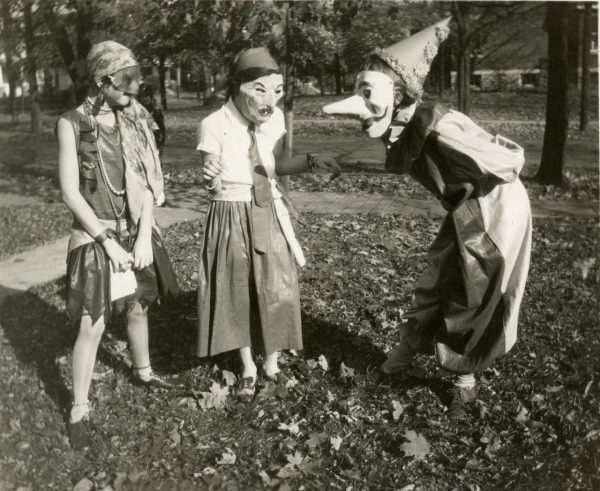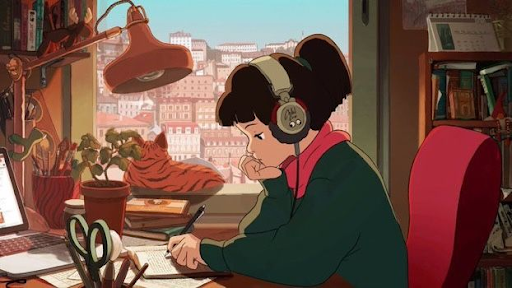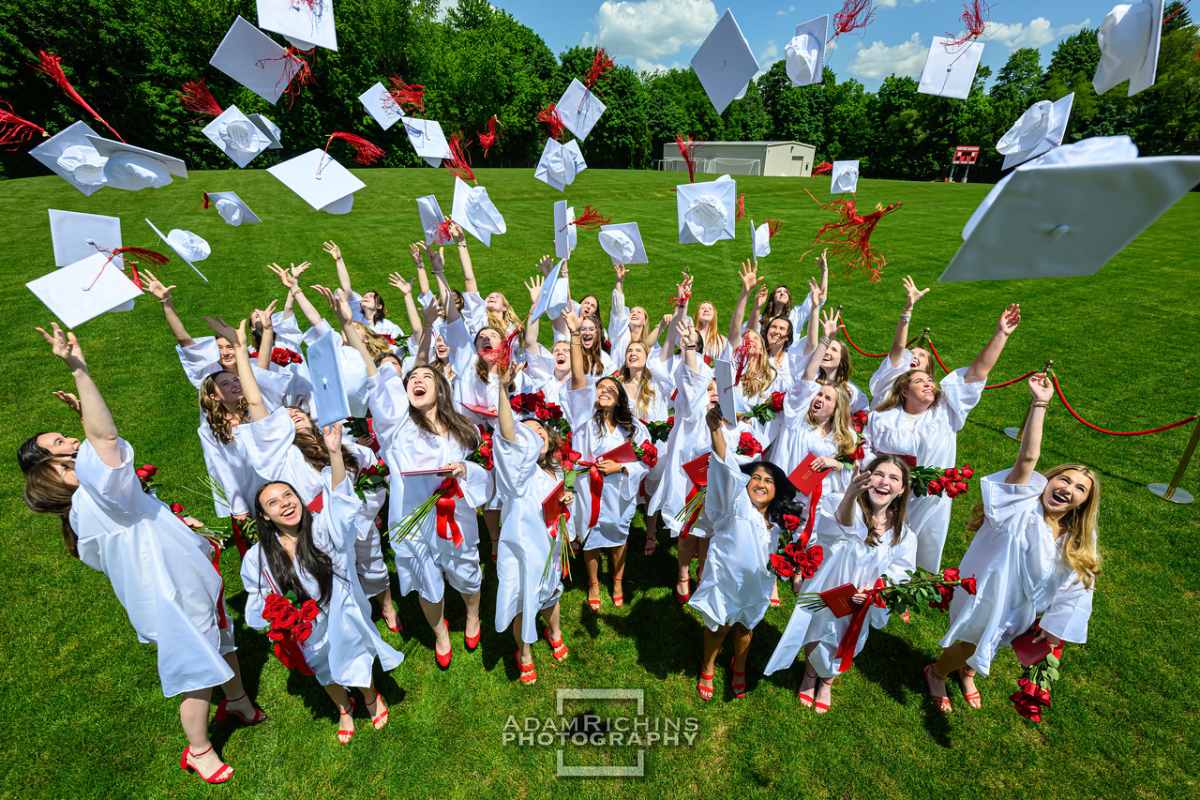The Origin of Halloween as a Holiday:
When trying to come up with a fall related fashion article, I hit a wall creatively. That was until I struck up a conversation with my good friend and fellow Looking Glass editor Helen Olohan ‘24, who said to me, “Why don’t you write about the history of Halloween costumes? That feels like something you’d write.” And she’s completely right. That is 100% something I would write. I soon (very predictably) found myself falling deeper and deeper down a rabbit hole of the history of Halloween costumes and the somewhat surprising and extremely superstitious origins of the holiday itself.
While today we know Halloween as a candy-filled celebration where little kids dress up as monsters, it started as a very different holiday. The origins of Halloween actually trace back 2,000 years ago to the British Isles. The Celts, who lived primarily in Ireland, Northern France, and the UK, celebrated the start of a new year on November 1st because it marked the changing of seasons and the end of the harvest, thus making it associated with long, difficult winters, and therefore, death. The Celtic people held the belief that on the night before the new year (being October 31st), the dead were able to return to earth, bridging the gap between our world and theirs. They celebrated this day with a festival called “Samhain,” meaning “summer’s end,” where they would burn crops and animal sacrifices in hopes that it would help the Celtic priests make futuristic predictions because of the connection with the spirit world. And while they made these sacrifices, they dressed in animal skin costumes, which is where we get our long beloved tradition of dressing up for Halloween.
By 43 A.D, when the Romans occupied much of the Celtic territory, the celebration shifted from one where spirits could visit earth, to one that centered around remembering the passing of the dead and honoring the gods, calling it “Feralia.” (Apparently Pomona, the Roman goddess of fruit, was represented by a symbol of an apple, which is why bobbing for apples is a common Halloween activity today). More than 600 years later, Christianity spread its way into Celtic culture, renaming the November 1st holiday “All Saints Day,” or “All-Hallows,” to include saints and martyrs. (This version of the holiday was celebrated similarly to Samhain with a bonfire) As a result, October 31st was known as “All-Hallows Eve,” eventually morphing into what we know today as Halloween.
The celebration came to America during the colonial period (only in the southern colonies, as the northern colonies felt it was sinful) as America began interacting with different European cultures, ultimately creating an Americanized version of the celebration. Halloween was still in honor of the harvest and the passing of the dead, but the superstitious colonial Americans would throw large parties where they would tell ghost stories along with each other’s fortunes. Also inspired by Europeans, Americans began dressing in costumes and visiting their neighbors to ask for food and money, which is where our modern trick-or-treat tradition comes from.
(Section source: History.com)
Halloween Costumes of the 19th Century:
In the early 19th century, Halloween was centered around ghost stories and tales of witchcraft, which would dictate the kinds of costumes that were seen during this era, even after it shifted in the late 19th century into more secular community based festivities. Nancy Deihl of NYU’s costume studies program told CNN Style, ‘“People in rural America really embraced its pagan roots, and the idea of it as a dark occasion, centered around death…They wore scary, frightening get-ups, which were made at home with whatever was on hand: sheets, makeup, improvised masks..Anonymity was a big part of the costumes…The whole point of dressing up was to be completely in disguise.”’ This was also the era that carving jack-o-lanterns began as a Halloween tradition. It stemmed from an Irish myth about a man named “Stingy Jack,” who played tricks on the devil and was forced to roam the earth with burning coal inside of a turnip in order to light the way. Because of their superstitious nature, people during this time began carving faces in various vegetables to scare away spirits such as Stingy Jack, which forever gave us our long beloved tradition. Halloween would become much more light-hearted by the late 19th century, as parents began raising concerns about their children partaking in dark magic. (History.com)

Halloween Costumes of the Early 20th Century (1900s-1940s):
By the early 20th century, Halloween was completely secularized into basically how we know it today: there were annual Halloween “masquerades,” or parties where people would dress up in costumes, gatherings to celebrate the fall season, and costumes influenced by pop culture. In the same CNN Style article, Halloween Historian Lesley Bannatyne shares, ‘“It was a way to come together before the turning of the season..Marketers played heavily on that as Halloween became more commercialized.”’ Due to the increase of Halloween commercialization, this era saw the rise of the first major Halloween costume manufacturing company, being the J. Halpern Company, or “Halco,” as it is better known, which was created in 1946. This way, people could dress up as their favorite film, comic, literature, or cartoon characters for their Halloween parties. In addition, according to the same interview with Bannatyne, “‘People also became fascinated with impersonating characters at the fringe of society,’ she said, adding that pirates, gypsies and even homeless people became common outfit choices.” Halloween would eventually get some backlash in the 1940s, because over the top pranks, and in severe cases, crimes would be committed, (most likely as a result of mask wearing) which slowed the celebration of the holiday in some areas of the U.S. (CNN Style)

Halloween Costumes of the Mid to Late 20th Century:
Post WWII, families began having televisions in their homes, which brought more pop culture into them than ever before. As a result, a large majority of the costumes during the mid 20th century were inspired by characters from TV and film. Various famous monster costumes, such as Frankenstein and Dracula, grew in popularity during this era with the increased release of movies surrounding those characters, along with the increased exposure to a variety of films because of television ownership. (I also like to think that Bobby Pickett’s famous song, Monster Mash from 1962 had something to do with this as well, although like the costumes, it could have been a result of the film and TV exposure) Different costume trends accompanied cultural fads as well, notably the popularization of the western movie genre and the Space Race. Additionally, Halloween costumes became more frequently store-bought. The 1960s saw the Ben Cooper Company, which eventually dominated around 80% of the costume market.
During the 1950s and early 1960s, masks were still the most popular costume piece sold for Halloween. But as more adults began participating in dressing up for Halloween due to its wide commercialization, they began leaving their faces exposed, primarily because the costumes they chose were usually human characters, such as Princess Leia from Star Wars (1977), or Superman. Thus, masks that covered one’s entire face became a less popular option of Halloween.
As the 1970s progressed, horror movies became more popular, with the release of films such as Halloween (1978) and The Exorcist (1973), which influenced countless scarier costume options. The 1970s and 1980s also saw the popularization of dressing up like real celebrities that the wearer admired, such as Princess Diana, Madonna, and Michael Jackson. Evidently, many of the trends in Halloween costumes that began as early as the 1970s are still popular today. (CNN Style)

Halloween Costumes of Today:
Anna-Mari Almila, a research fellow at the London College of Fashion told CNN Style, ‘“Halloween costumes have gone from disguises to full-on exhibitionist..Today, it’s one big capitalist celebration completely detached from any vestige of Christianity or paganism, and more centered around expressing people’s fantasies – which also explains its success globally.”’ While an argument could be made that Halloween has become less creative due to many people nowadays exclusively buying their costumes from a costume company, I think Gen Z is somewhat putting an end to that. TikTok booms this time of year with thousands of videos of people constructing a Halloween costume from just the clothing in their closets. The rise of thrifting has contributed to this as well, with real vintage clothing being accessible for countless costumes. In addition, store-bought costumes today that are inspired by pop culture are also not limited to what is being shown on mainstream television, with millions of TV shows and movies being available due to streaming services. Popular costumes from the past couple of years have included movie and TV characters, controversial political figures, and couples costumes, which have risen in popularity in the last couple of decades. The New York Post predicts that the most popular Halloween costumes of 2023 will be Barbie and Ken, Taylor Swift, and Wednesday Adams. If you want more information on this topic, I used articles from CNN Style (From Pagan Spirits to Wonder Woman: A Brief History of the Halloween Costume) and History.com (Halloween Timeline: How the Holiday Has Changed Over the Centuries). I hope you enjoyed diving into the origins of Halloween and the history of Halloween costumes as much as I did, and here’s a shoutout to Helen Olohan ‘24 for the article idea!
By Chloe Stefani ‘24, Fashion Editor



















